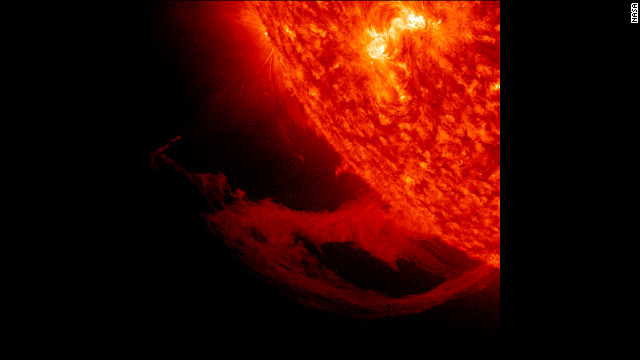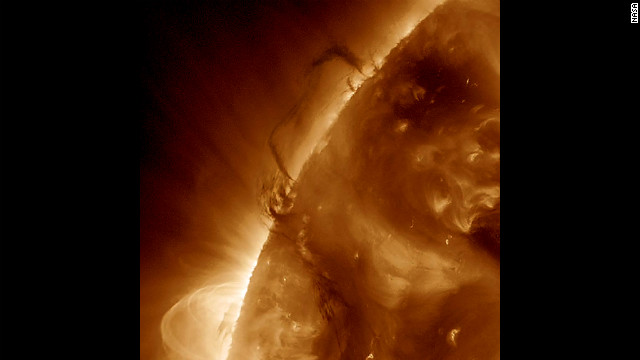Nonetheless, last week the center reported that the sun had produced a "moderate-level" solar flare, which had "short-lived impacts to high frequency radio communications on the sunlit side of Earth."

Solar flares can send blasts of radiation through space that can interfere with satellites and even harm astronauts during spacewalks.
"So when an eruption happens -- when we have that flash of light, those radio waves -- that takes eight minutes to get from the sun to the Earth. So as soon as we start the measurement, it's already affecting the sunlit side of the Earth," explains Rutledge.
Innovations in spacecraft by NASA are showing us some of the best images of the sun we've ever seen -- giving us a clearer picture and hopefully a better understanding of space weather.
This close-up view of a prominence reveals magnetic forces at work as they pull plasma strands this way and that before it gradually breaks away from the sun over a one-day period November 14-15, 2011
This close-up view of a prominence reveals magnetic forces at work as they pull plasma strands this way and that before it gradually breaks away from the sun over a one-day period November 14-15, 2011
 But there is still much mystery to the 4.5 billion-year-old star and the emissions that are blasted through space, so scientists and forecasters will continue to watch every movement.
But there is still much mystery to the 4.5 billion-year-old star and the emissions that are blasted through space, so scientists and forecasters will continue to watch every movement.Two areas of dark plasma that were close together danced and entwined with each other over a one-day period March 27-28, 2012. The dark plasma, seen in profile, was somewhat cooler and therefore darker than the material around it.












No comments:
Post a Comment